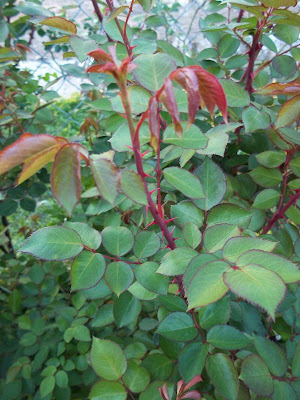Super Dorothy is classified as a rambler rose and fits well into that class of roses as a very long and lean climber. The canes are highly flexible and easy to train. It will effortlessly cover a large area. It is supposed to be one of the only repeat blooming ramblers available, but mine has never bloomed more than once per season in its four year life-span.
I'm not complaining all that much about it blooming only once per year. After all, when it DOES bloom, it's covered! The above picture shows it growing on my chainlink fence between Earthsong and Archduke Charles. Frankly, this rose would be happier in a place where it can sprawl out even more.
The blooms are small with a quilled look to them. The come in huge clusters that resemble grapes hanging. The effect can be quite stunning when at peak bloom. Unfortunately, there is no fragrance at all with this rose. I have never seen even a speck of disease on this plant even though I never spray it. This would be a fine rose to put on a pergola or climbing up a large wall face. The color is perfect for an English style cottage garden and would fit in that setting well.

























